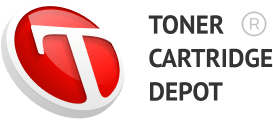
/
Introduction to Nanoparticle Toner Technology
- The Rise of Nanoparticle Toner: This section introduces nanoparticle toner technology and its advantages in print quality and efficiency for professional and commercial printing.
- The ROI Factor: Discusses why return on investment (ROI) is crucial when investing in printing technology and briefly introduces the three leading manufacturers: HP, Xerox, and Canon.
Understanding the Technology
- Nanoparticle Toner Explained: Explains the concept of nanoparticle toner, emphasizing the significance of smaller particle size (2-5 micrometers) for improved print quality compared to traditional toner.
- Manufacturer-Specific Approaches: Delves into the unique approaches of each company:
- HP Latex: Describes HP’s Latex technology using latex-based ink with suspended pigment particles, highlighting its versatility and durability.
- Xerox EA Toner: Explains Xerox’s Emulsion Aggregation (EA) toner technology, focusing on its uniform particle size, cost efficiency, and energy-saving properties.
- Canon FINE Technology: Details Canon’s Full-Photolithography Inkjet Nozzle Engineering (FINE) technology, emphasizing its nano-sized pigment particles and high-density nozzle design for precise color accuracy and detail.
- Technology Comparison Table: Provides a table summarizing the technology name, average toner particle size, and key features of each manufacturer.
Quality Metrics Comparison
- Print Resolution (DPI) Comparison: Explains DPI (dots per inch) as a key quality metric and compares the DPI capabilities of each technology:
- HP Latex: Typically up to 1200 DPI, suitable for a wide range of applications.
- Xerox EA Toner: Up to 2400 DPI, ideal for professional use cases requiring crisp, detailed prints.
- Canon FINE Technology: Up to 4800 DPI, delivering exceptional detail, especially for photographic and fine art printing.
- Color Accuracy in Digital Printing: Discusses the importance of color accuracy and compares the performance of each manufacturer:
- HP Latex: Offers a wide color gamut and vibrant, durable colors, particularly effective for outdoor applications.
- Xerox EA Toner: Delivers consistent color accuracy due to uniform particle size, with built-in calibration tools for long print runs.
- Canon FINE Technology: Renowned for color accuracy, especially in matching Pantone shades and producing photo-realistic prints.
- Real-World Print Samples Analysis: Provides a brief analysis of real-world print samples, comparing the strengths and weaknesses of each technology in terms of vibrancy, detail, and color consistency.
- Professional Use Cases: Summarizes the ideal professional use cases for each technology based on its quality metrics:
- HP Latex: Signage, banners, and versatile applications.
- Xerox EA Toner: High-efficiency printing for office documents and professional graphics.
- Canon FINE Technology: Studios and designers requiring precise and vibrant photographic prints.
Cost Analysis
- Initial Investment Comparison: Compares the initial cost of acquiring printers from each manufacturer:
- HP Latex: Affordable entry-level models ($2,000-$10,000) and higher-priced high-end models.
- Xerox EA Toner: Higher upfront cost ($3,500 for office printers to $15,000 for commercial-grade models).
- Canon FINE Technology: Wide range of costs ($300 for small office printers to $8,000 for professional-grade equipment).
- Printing Cost per Page Breakdown: Compares the average cost per page for color printing, considering ink/toner and maintenance supplies:
- HP Latex: $0.08-$0.12 per page.
- Xerox EA Toner: $0.06 per page, benefiting from lower toner consumption and high-yield cartridges.
- Canon FINE Technology: $0.10-$0.15 per page, depending on color detail and media used.
- Energy Consumption in Printing: Analyzes the energy efficiency of each technology:
- HP Latex: Relatively high energy consumption due to ink curing and drying.
- Xerox EA Toner: Energy-efficient due to low-temperature fusing.
- Canon FINE Technology: Moderate energy consumption with energy-saving features.
- Printer Maintenance Costs: Discusses the impact of maintenance on long-term ROI:
- HP Latex: Requires periodic printhead replacement, increasing maintenance costs.
- Xerox EA Toner: Minimal maintenance due to long-lasting components.
- Canon FINE Technology: Requires regular printhead cleaning, potentially adding downtime.
- ROI Calculation Examples: Provides ROI calculation examples for a hypothetical print shop, comparing the monthly costs of each technology based on a specific print volume.
Efficiency and Performance
- Commercial Printing Efficiency: Evaluates the efficiency of each technology in commercial printing environments:
- HP Latex: Well-suited for versatile printing on various media.
- Xerox EA Toner: Designed for high-volume printing with minimal downtime.
- Canon FINE Technology: Capable of handling heavy workloads, particularly prioritizing quality.
- Speed Comparisons: Compares the average print speed of each technology in pages per minute (ppm):
- HP Latex: 40-50 ppm.
- Xerox EA Toner: Up to 70 ppm for monochrome and 50 ppm for color.
- Canon FINE Technology: 30-40 ppm, slower but focused on quality.
- Network Integration: Discusses the network integration capabilities of each manufacturer, highlighting Xerox’s leadership in compatibility with enterprise software solutions.
Environmental Impact
- Sustainable Printing Technology Analysis: Analyzes the sustainability of each technology:
- HP Latex: Water-based, recyclable inks reduce harmful emissions.
- Xerox EA Toner: Energy-efficient, minimizing carbon footprint.
- Canon FINE Technology: Uses relatively eco-friendly pigment-based inks with refillable tanks for some models.
- Energy Efficiency Comparison: Compares energy efficiency, highlighting Xerox EA Toner as the most efficient and HP Latex as the least efficient.
- Waste Reduction: Discusses waste reduction initiatives like cartridge recycling programs (Xerox and Canon) and the use of environmentally friendly inks (HP).
Real-World Implementation
- Case Studies: Presents case studies demonstrating real-world applications and benefits of each technology:
- HP Latex: Signage company achieves reduced production time due to fast-drying ink.
- Xerox EA Toner: Law firm reduces printing costs and downtime with EA toner.
- Canon FINE Technology: Photo studio achieves increased client satisfaction with improved print quality.
- User Testimonials: Provides user testimonials highlighting the positive experiences of professionals using each technology.
- Industry-Specific Applications: Summarizes the ideal industry-specific applications for each technology:
- HP Latex: Advertising and textile industries.
- Xerox EA Toner: Legal, healthcare, and education sectors.
- Canon FINE Technology: Photography, design studios, high-end marketing materials.
Conclusion and Recommendations
- Summary of Findings: Summarizes the key strengths of each technology:
- HP Latex: Versatility and suitability for a wide range of media.
- Xerox EA Toner: Cost efficiency and high-speed performance for office environments.
- Canon FINE Technology: Exceptional print quality for photographic and color-rich prints.
- ROI Comparison Table: Presents a table comparing the initial investment, cost per page, print speed, and ideal use cases for each technology.
- Specific Recommendations for Different Use Cases: Provides specific recommendations for choosing the optimal technology based on printing needs:
- High-Volume Office Printing: Xerox EA Toner.
- Versatile Printing Needs: HP Latex.
- Photographic and High-Quality Printing: Canon FINE Technology.
- Future Technology Prospects: Briefly mentions the continuous evolution of nanoparticle toner technology and the importance of regularly evaluating technology choices for optimal ROI.
Final Thoughts
This section reiterates the overall message: businesses can choose the best nanoparticle printing technology to meet their specific needs, whether prioritizing efficiency, cost savings, or high-quality output, by carefully assessing their printing requirements and the advantages of each technology.
